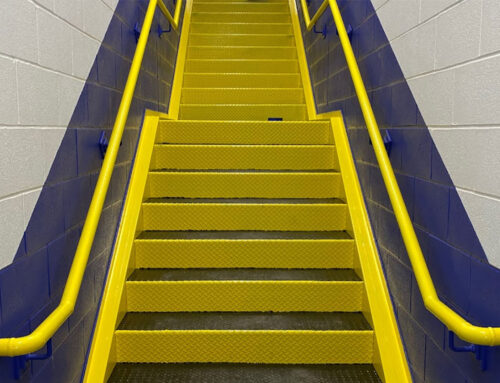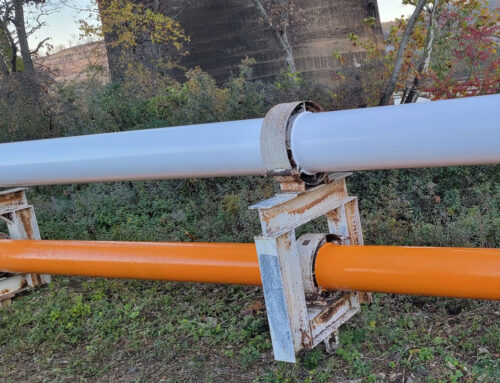The U.S. Energy Information Administration calls our country’s natural gas pipelines “a highly integrated network” with approximately 3 million miles of mainline and additional pipelines that connect to storage and production locations. The American Petroleum Institute, which lobbies for American-based oil and gas companies, tracks where pipelines move crude oil to refineries and chemical plants. The group estimates nearly 200,000 miles of liquid petroleum transport oil throughout the U.S., the most interconnected networks starting in Texas and Louisiana. The Report Card for America’s Infrastructure reports 2.2 million miles of pipeline transport our nation’s drinking water.
Simply put, that’s a lot of underground pipelines transporting much-needed energy sources and water to businesses and consumers. Every inch of those pipelines require an underground coating, a layered temperature-resistant coating that protects steel pipelines from corrosion and other forms of damage.
The team at Eagle Eye Services applies industrial coatings to pipelines operated by oil and gas companies, chemical plants, and industrial plants. In our years of coating experience, we’ve identified the types of underground coatings, the cost considerations, and quality determined. Read on to learn more about underground coatings and why they’re critical.
What You Need to Know About the Types of Underground Coatings
Coating quality and, therefore, costs can vary significantly with surface preparation needs and coating application methods. Here are four types of underground coatings and their benefits.
Mill Applied
Mill-applied pipeline coating is the least expensive type of underground coating. It’s applied during the pipe’s manufacturing process. Most kinds of mill-applied pipeline coatings have limitations to how heat resistant they are. Mill-applied pipeline coatings, depending on the materials, also may allow some amount of water to permeate and may be susceptible to deformities.
Field Applied
Field-applied coatings are typically performed in an unburied ditch that exposes the pipeline or performed above a ditch. In comparison to mill-applied coatings, they can be much more expensive. Unless newer, more effective coatings are applied in the field, this method runs the risk of leveraging lower performing coatings.
Line Coatings
Line coatings are the gold standard for pipes that face challenging environmental conditions. They have an epoxy composite that’s remarkably durable, which industrial coating professionals apply in layers around the pipe.
How Underground Coatings Protect Pipelines
Buried pipelines need a coating in order to combat soil corrosion. In the Northeast and Mid-Atlantic regions, the types of soil we have are exceptional at holding water, which is great for growing produce but terrible for corroding steel pipes. Even looser types of soil can escalate corrosion because it introduces more oxygen to steel pipes. However, with an effectively applied powder coating, oxidation is reduced, if not mitigated completely, for a lifespan of 20 years.
Does Your Company Need Underground Coatings? Contact Eagle Eye Service an Estimate Today.
Pipelines and other steel infrastructure components require long-term protection from corrosion. The industrial coating professionals at Eagle Eye Services can provide a cost-effective estimate for your industrial business’ prospective coating project, including a breakdown of surface preparation, materials cost, application methods, potential repairs, and coating lifespan. Our team will also perform before and after inspections of the pipeline as part of our quality assurance process. Contact our team today at 724-754-1122 obtain an estimate.
Ready to Get Started?
Have questions about your project or need a quote? We’ve got someone ready to help you.



